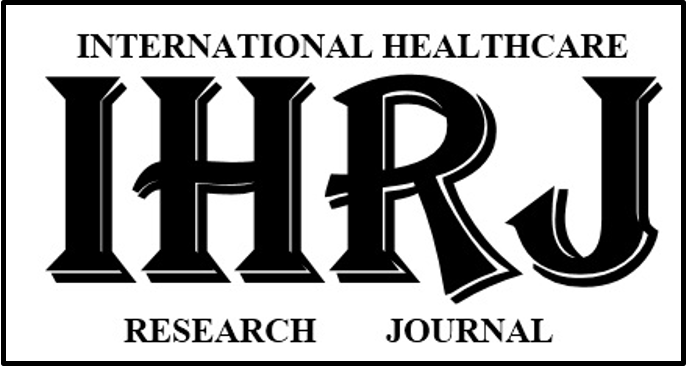Diabetes Case Burden at Central Regional Referral Hospital, Gelephu, Bhutan; A Retrospective Study
Abstract
BACKGROUND: Diabetes is a metabolic disorder affecting millions of people globally. The incidence of type 2 diabetes is increasing rapidly in Bhutan. Anecdotal evidences show poor compliance and loss to follow up among the Bhutanese population living with diabetes. This study was conducted to understand the case load, age and gender distribution and compliance to follow up among diabetic patients registered at Central Regional Referral Hospital, Gelephu, Bhutan.
MATERIALS & METHOD: All the patients diagnosed and registered with Diabetic Clinic between 1st January 2014 to 31st December 2018 were included in the study.
RESULTS: There was a sharp increase in number of registered diabetic patients from 641 cases in 2014 to 1590 cases in 2018. A total of 949 new cases were diagnosed and registered during the study period of which 52% were women. The overall diabetes prevalence under Gelephu CRRH catchment area is found to be 2.91% with lowest at Chhudzom (1.01%) and highest in Samtenling Gewog (3.18%). Lost to follow up among new cases for past four years was found to be 3.96%, 5.0%, 6.47% and 5.85% from 2015 to 2018 respectively.
CONCLUSION: The ageing population and sedentary lifestyle has contributed to the sharp escalation of type 2 diabetes cases in Gelephu. The hospital recorded total of 1590 cases in 2018 which is a two-fold increase in case load within a span of five years. The current analysis found that loss to follow up was 3.96%, 5.0%, 6.47% and 5.85% from 2015 to 2018 respectively among new cases of diabetes registered with the hospital.
Downloads
References
Inzucchi SE, Sherwin RS. Type 2 diabetes mellitus. Cecil Medicine 24th ed Philadelphia, Pa: Saunders Elsevier. 2011.
Kaveeshwar SA, Cornwall J. The current state of diabetes mellitus in India. The Australasian Medical Journal 2014;7(1):45-8.
Howdon D, Rice N. Health care expenditures, age, proximity to death and morbidity: Implications for an ageing population. Journal of Health Economics 2018;57:60-74.
Mokdad AH, Ford ES, Bowman BA, Dietz WH, Vinicor F, Bales VS, et al. Prevalence of obesity, diabetes, and obesity-related health risk factors, 2001. JAMA. 2003;289(1):76-9.
Dorji T, Yangchen P, Dorji C, Nidup T, Zam K. An approach to diabetes prevention and management: the Bhutan experience. WHO South-East Asia Journal of Public Health 2016;5(1):44-7.
The Growing Danger of Non-Communicable Diseases: Acting Now to Reverse Course. Washington DC: The World Bank; 2011.
Wild S, Roglic G, Green A, Sicree R, King H. Global prevalence of diabetes: estimates for the year 2000 and projections for 2030. Diabetes care. 2004;27(5):1047-53. https://doi.org/10.4103/2224-3151.206552
Palmer SC, Strippoli GF. Metformin as first-line treatment for type 2 diabetes. The Lancet. 2018;392(10142):120.https://doi.org/10.1016/S0140-6736(18)31541-1
Zam K, Kumar AM, Achanta S, Bhat P, Naik B, Zangpo K, et al. A first country-wide review of Diabetes Mellitus care in Bhutan: time to do better. BMC Health Services Research 2015;15(1):389.
Dimeski G, Yow KS, Brown NN. What is the most suitable blood collection tube for glucose estimation? Annals of Clinical Biochemistry 2015;52(2):270-5.
American Diabetes Association. Diagnosis and Classification of Diabetes Mellitus. Diabetes Care. 2010 Jan; 33(Suppl 1): S62–S69.
Chhetri V, Yangchen K, Dawa C. Increasing Trend of Clinical Laboratory Testing at Gelephu Central Regional Referral Hospital, Bhutan. International Journal of Innovative Research in Medical Science (IJIRMS) 2018;3(11):2265-9. https://doi.org/10.23958/ijirms/vol03-i11/463
Ramachandran A, Snehalatha C, Ma RCW. Diabetes in south-east Asia: An update. Diabetes Research and Clinical Practice 2014;103(2):231-7.
Burke JP, Williams K, Gaskill SP, Hazuda HP, Haffner SM, Stern MP. Rapid rise in the incidence of type 2 diabetes from 1987 to 1996: results from the San Antonio Heart Study. Archives of Internal Medicine 1999;159(13):1450-6.
Centers for Disease Control and Prevention (CDC). Trends in the prevalence and incidence of self-reported diabetes mellitus--United States, 1980-1994. MMWR Morbidity and mortality weekly report. 1997;46(43):1014.
World Health Organization. National survey for noncommunicable disease risk factors and mental health using WHO STEPS approach in Bhutan-2014.
Norbu W, Wangdi U, Dorji D, Arthan D, Soonthornworasiri N, Maneekan P, et al. Obesity prevalence and contributing factors among adolescents in secondary schools in Pemagatshel district, Bhutan. International journal of adolescent medicine and health. 2017;31(1).https://doi.org/10.1515/ijamh-2016-0143.
Wangdi K, Jamtsho T. Risk factors for self-reported diabetes among Bhutanese adults: A nationally representative survey data analysis. PloS One. 2018;13(11):e0206034.
Adhikari D. Healthcare and happiness in the Kingdom of Bhutan. Singapore Medical Journal 2016;57(3):107-9. https://doi.org/10.11622/smedj.2016049

Copyright (c) 2020 Vishal Chhetri et al.

This work is licensed under a Creative Commons Attribution-NonCommercial 4.0 International License.


